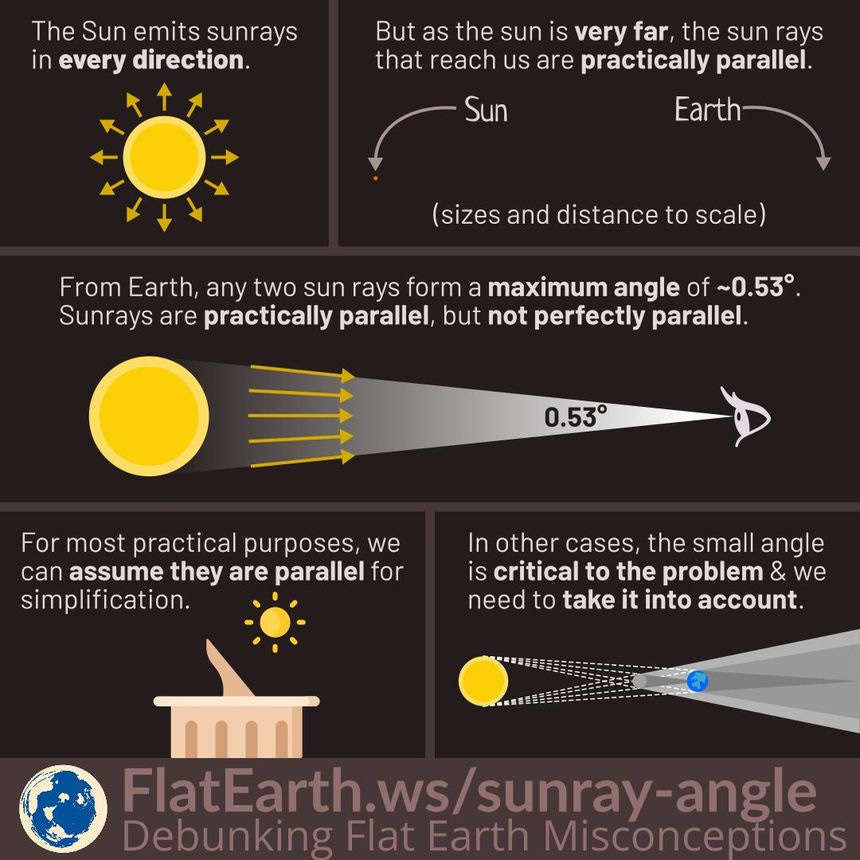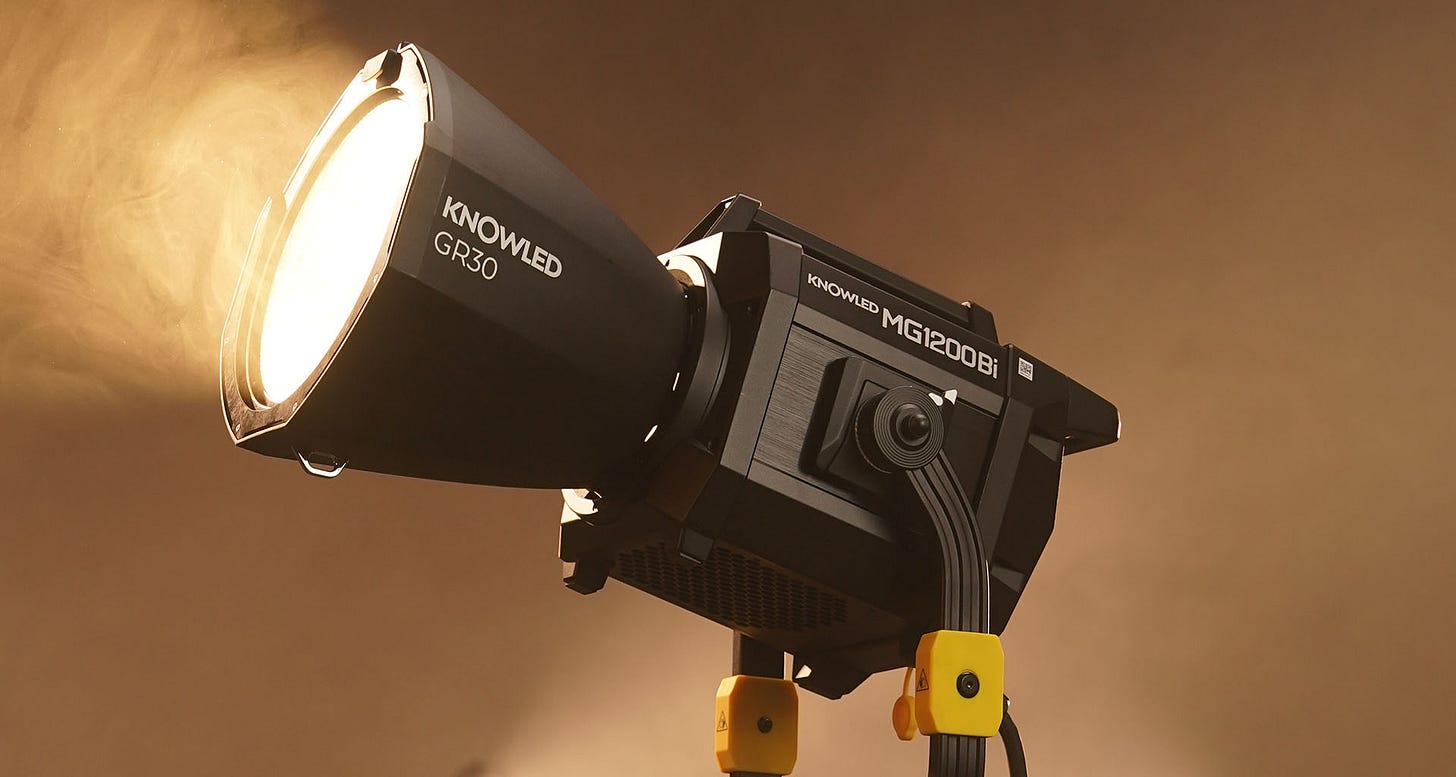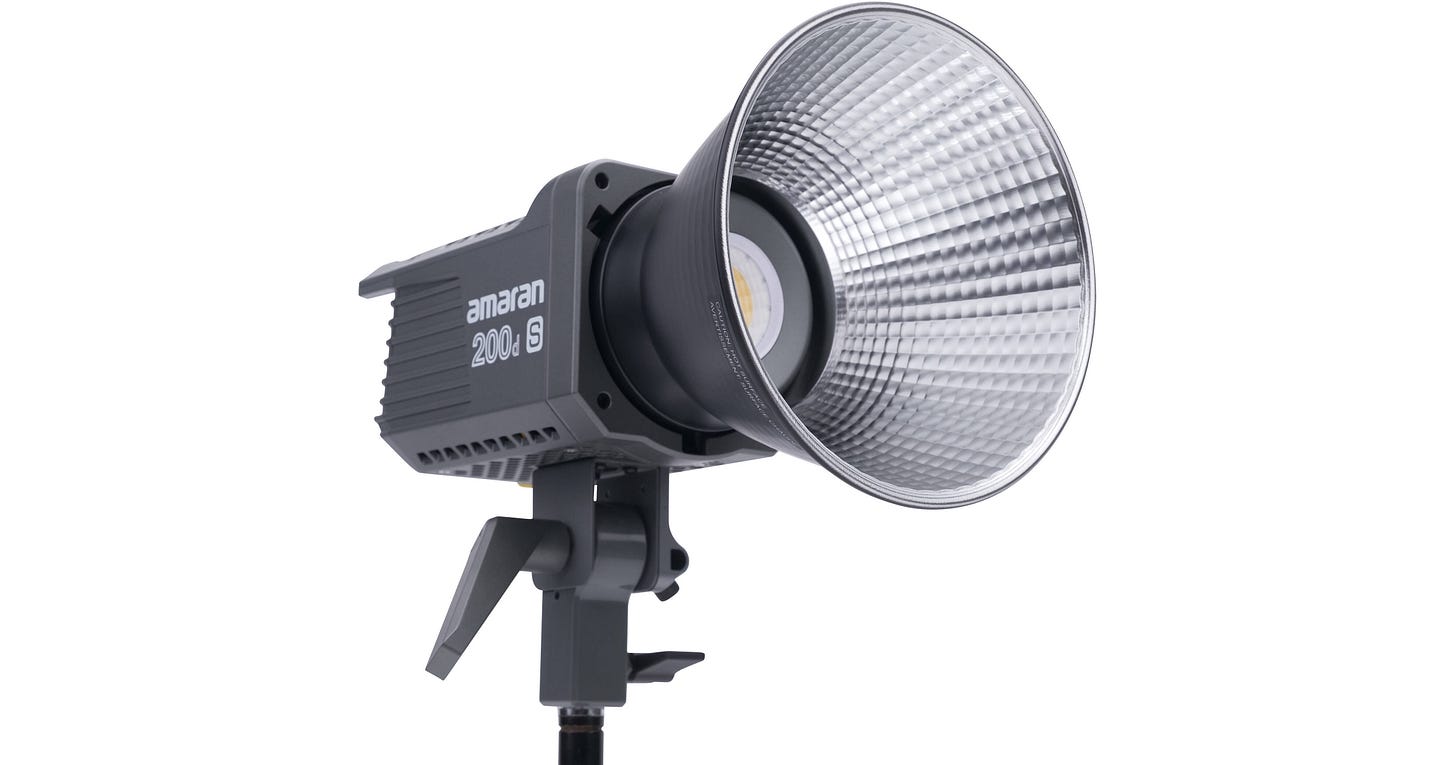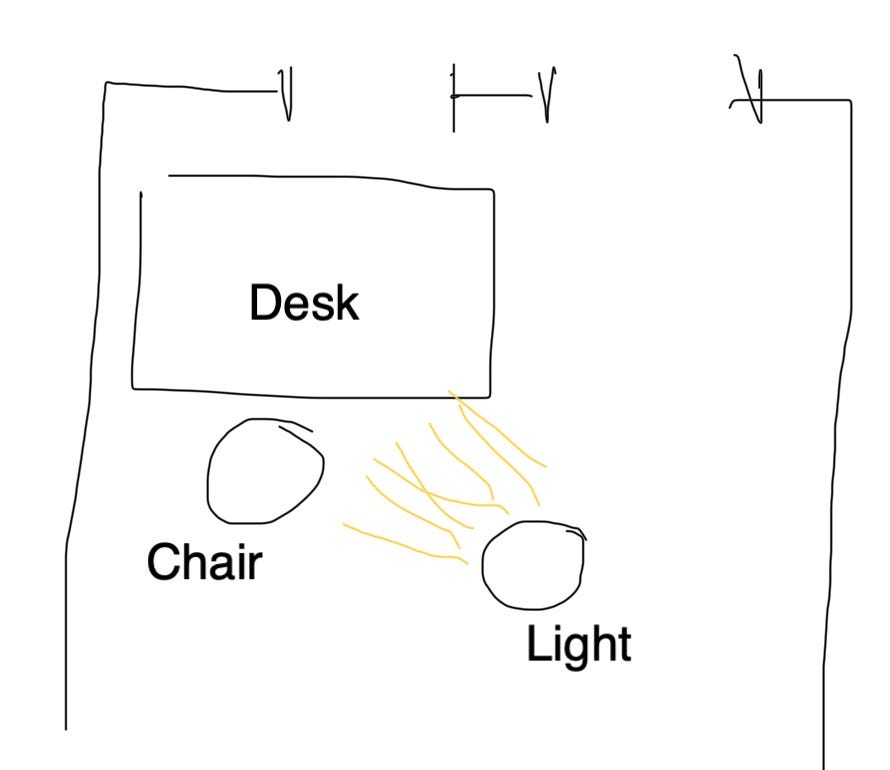Improve your focus, productivity and mood by recreating the sun
You probably need more light than you think.
Most people get sleepy when they are in a dark room and have a difficult time falling asleep in a very bright room. This isn’t a shocking statement to most people, but most don’t realize that this applies to you to a lesser degree even in typically lit rooms. The less lit your room is, the less alert you will be. You can improve your productivity and mental alertness significantly by making your room much brighter than most people find to be normal with movie lights.
The goal is to make your workspace as close to sunlight as possible so we can trick our brain into 'waking up' and thinking it's outdoors in the sun. This means making it as bright as being outside in the sun, which can mean lighting your visible workspace to your peripheral vision to the same color quality and intensity as being outside, having a lot of windows and skylights that capture a good amount of sunlight, or working outside if possible.
This is even more important if you are sensitive to the ‘winter blahs’ or have seasonal affective disorder.
How do you recreate sunlight?

The ideal case is working outside, living somewhere where it’s sunny 24/7, or having a very sunny office space, but for many, that is not a practical consideration due to weather issues or the inability to move or modify their house/office to add a lot of windows and not have them blocked by orientation or other buildings.
So, for everyone else, we need to recreate sunlight inside our workplaces. Sunlight has a lot of attributes people don’t realize:
The sun is a hard light source
It’s a small, extremely bright spot in the sky, which means it will create hard shadows with well-defined borders. A soft light source is a large source of light that takes up a lot of space, and these lights create 'soft' shadows without well-defined borders and more evenly fill a space with light. Because the sun is so bright, the light that bounces from the environment acts like a secondary large 'soft' light source and fills in the rest of the environment. Our light system will need to reproduce both effects.
Sunlight has a very broad but specific spectrum of light

The sun is not just a yellow or white light; it creates all colors at once since it's a blackbody radiator at a ~6000K color temperature. Within sunlight is every color you could imagine, but each 'color' is at different intensities, which is also due to our atmosphere filtering out bands of wavelengths. The secondary bounce effect, depending on the weather, also changes the color spectrum we experience. Clear days create blue skies, which in turn adds a lot more ‘blue’ to what we see compared to what the color spectrum of sunlight would be in space. Cloudy days amplify this blue effect even more. Our brains adjust everything automatically, so the outdoors doesn’t look like you’re under the ocean.
The sun's light rays are all parallel

Because the sun is very far away from us, our eyes are very small, and the earth's surface is very large in comparison. The sun's rays are all practically parallel as far as we can see on the earth. This creates a very specific, concentrated lighting effect that our brains recognize as sunlight. Almost all light sources you buy project light in all directions or in a cone beam, which is different than sunlight.
Movie spotlights are the best for this
Movie lights are ideal for the artificial lighting case because they have:
A lot of light from a small spot makes them intense hard light sources that act like the sun.
They have high-quality color accuracy that is way better than almost all light bulbs you could buy. The movie industry demands that they reproduce natural sunlight for artistic reasons.
There is little to no flicker compared to typical LED bulbs. The sun doesn’t flicker; it burns continuously. Movie lights can't flicker visibly because they can appear in the recording. They usually use PWM flicker dimming in the kilohertz rate to compensate for this.
Several tools help make most of the light rays parallel, which is a key attribute of sunlight we need and is hard to do with normal light bulbs.
An ecosystem of reflectors, diffusers, light concentrators, stands, and so on that are easier to deal with than mounting 20 light bulbs to evenly distribute light and shade them properly so as not to hurt your eyes.
Will last their +20k rated hours, unlike most bulbs.
Have app control capabilities that let you adjust them without needing to get up.
You can use them to make nicely lit YouTube videos in the future.
Also, they will act as great plant grow lamps for your workspace plants.
The best movie light for this case
After researching this for a few days over the past year, I’ve determined that any LED spotlight movie light with an SSI D55 color score of 85 or higher and no flicker issues is ideal for this. SSI D55 is a 0-100 score that measures how closely a light reproduces the color spectrum of the sun.
There are not that many, though. The best quality/$ light I’ve found is an Amaran 200d S, with its 89 SSI score and great flicker performance. I tested a few other lights and dug into many YouTube reviews about others, but most affordable LED movie lights have SSI scores in their 70s vs. the high 80s that Amaran has. The amaran also comes with a hyperparabolic reflector, which will make a lot of the light rays parallel and significantly concentrate the light in your visible workspace.
Many professional $2500 LED lights don’t have the high SSI 89+ color scores that the Amaran lights have, and $350-$700 and 200-400W of power consumption is probably the upper limit most are willing to spend on this. Amaran gets their higher scores mostly due to dual blue LED tech, which most other lights do not have.
How to set up your sun simulation
The goal is to reproduce the experience of being in the sun as close as possible within your office without the light bothering you or making it difficult to see your screen.

When you are outdoors, when it's sunny and around 1 pm, the sun is not in your field of vision, blinding you. But it's above you, just off to the side. When you want something you're looking at to be lit the most, you put the sun behind you so it catches the most direct sunlight without any shadows. The wide area that the sun lights up also illuminates the rest of your field of vision. We want to reproduce this experience the most.

To make this happen, I put the spotlight behind me and to the right on a light stand, made the light stand go as high as it could go without hitting the ceiling, and put on the hyper-reflector to concentrate the light significantly and make the light more parallel without taking up too much space compared to a parabolic reflector.
I then point the light right where I am sitting, not on my desk, since I want it to also light up the lower part of my peripheral vision and not shine as directly on my screens, making them hard to look at. It also prevents the light from glaring up my glasses’ edge.
This setup is pretty good, but it doesn't fill up your upper peripheral vision that well. You can solve this by getting a second movie light and pointing it upward to bounce off the ceiling to create a general soft fill light, concentrated on the upper area of your vision, or by leaving your general office lights on, which can fill in this upper area somewhat. The second fill light also helps us simulate the general secondary soft illumination the sun creates because it hits everywhere.
If you don’t put on the hyper reflector and point it at your workspace, the light will not be parallel. It will also be too flat and even, and I found it became disorienting if I didn’t put on the reflector or just had it bounce off my ceiling. Your outdoor experience lighting-wise isn’t perfectly uniform like this light is without a reflector.
My Experience
Unfortunately, my condo is pretty dark, with trees blocking out a lot of light. I have northwest-facing windows and narrow windows on top of that. I borrowed a friend's Amaran 60x S for a few months and bounced it off the ceiling in front of me, and it significantly improved my alertness and mood. Later, I returned it to my friend and didn’t have the light for a few months.
I tried 3 cheap GVM panel lights because I thought it would be an improvement to have soft lights vs. hard lights, and with 3 less intense lights, I would be able to fill out the space more evenly. I found out they had a flicker problem, the color reproduction wasn't nearly as good, and I found the lights somewhat nauseating as a result, partly due to the softness.
I got my own Amaran 100d S and created my current setup after a bunch of research. I found it worked very well, with even more light and alertness increases and no nausea or other issues when I used the hyper reflector and really upped the light intensity. I plan to get a 200d or similar and use the 100d as a fill light to fill out the rest of my vision.
I got an Amaran 60x S & 200d S for my brother because he lives in a basement suite in the Pacific Northwest, which is cloudy and dim for eight months of the year. He also found it significantly improved his alertness and mood whenever he worked there.
So, if you're having a hard time working, a couple of movie lights might fix your issue!
Appendix
SSI D55? How about CRI?!
CRI is an old color rating system from the 1950s that compares how well a light reproduces a set of about a dozen pastel colors. It misses a lot. The current best color rating system is SSI, which compares the full spectrum of visible light of one light to another reference light. SSI D55 or SSI D56’s reference light is outdoor clear sky noonday sunlight, which we want to reproduce the most. An SSI score of 100 is a 100% reproduction, while 75 is a 75% reproduction.
In LED lights today, 75s is “good”, 85 is “really good,” and anything that is 90+ is “extremely good and rare”. The Amaran 200d has an SSI D56 score of 89 and is priced like a budget movie light. The only light that approaches a 99+ SSI D55 score is an HMI light, which is an older, completely different kind of lighting tech, expensive, hot, fragile, and has consumable bulbs.
You can watch more about this here:
Other light parallelizing tools
You can make your light parallel with 2 other tools, a parabolic reflector or Fresnel lens. They are used as variable light focusing tools for the most part and let you change the light shape circle size and get more intense the more you focus the light. They also happen to make the light rays parallel as a side effect. They are fairly standard things, but will cost a few hundred dollars each and can take up space, so I didn’t recommend them. The hyperreflector you get with your Amaran does the job and just gives you a static focus circle.
Other sources & inspirations
Dave Chapman’s “YOU NEED MORE LUX” & “Seriously bright light vs. winter blahs” is a great article pair that goes into more detail about this topic, especially from the seasonal affective disorder side and how most SAD lamps are not good. He does it with LED corn bulbs, though, and has them in your field of vision, which I find quite painful, along with all the color issues that come with cheap LED lights and lack of ‘sun simulation’ aspects with having them. I hope the extra insight that my photography hobby perspective brings helps out with this.
Nick Cammarata pointing his 1200W light at a large parabolic reflector to make the light rays parallel was also a great hint to me what was bothering me with my current lights, which led me to research more into making the light rays parallel. After doing some side research, I realized the hyperbolic reflector that came with my Amaran also mostly did that, too, and it really improved my experience. His setup is the best, but you're going to trip breakers and have huge power bills if you do it, not to mention a lot of heat.
Reproduce it even better
Want an even better sun simulation or to understand the engineering of it better? Read my follow-up articles:
Advanced sun reproduction
Here are some "advanced" things you can do to reproduce the sun even more closely. They have more tradeoffs although and cost a lot more money. This is a follow on article to this one:
Understanding sunlight reproduction
I’m seeing too much misinformation about how to evaluate lighting quality to reproduce sunlight, and people are recommending things that are worse and counterproductive to their goals. For example, mercury vapor lamps are worse than the worst 90s flickering fluorescent office lighting in color quality because they happen to have some UV light in them. T…








